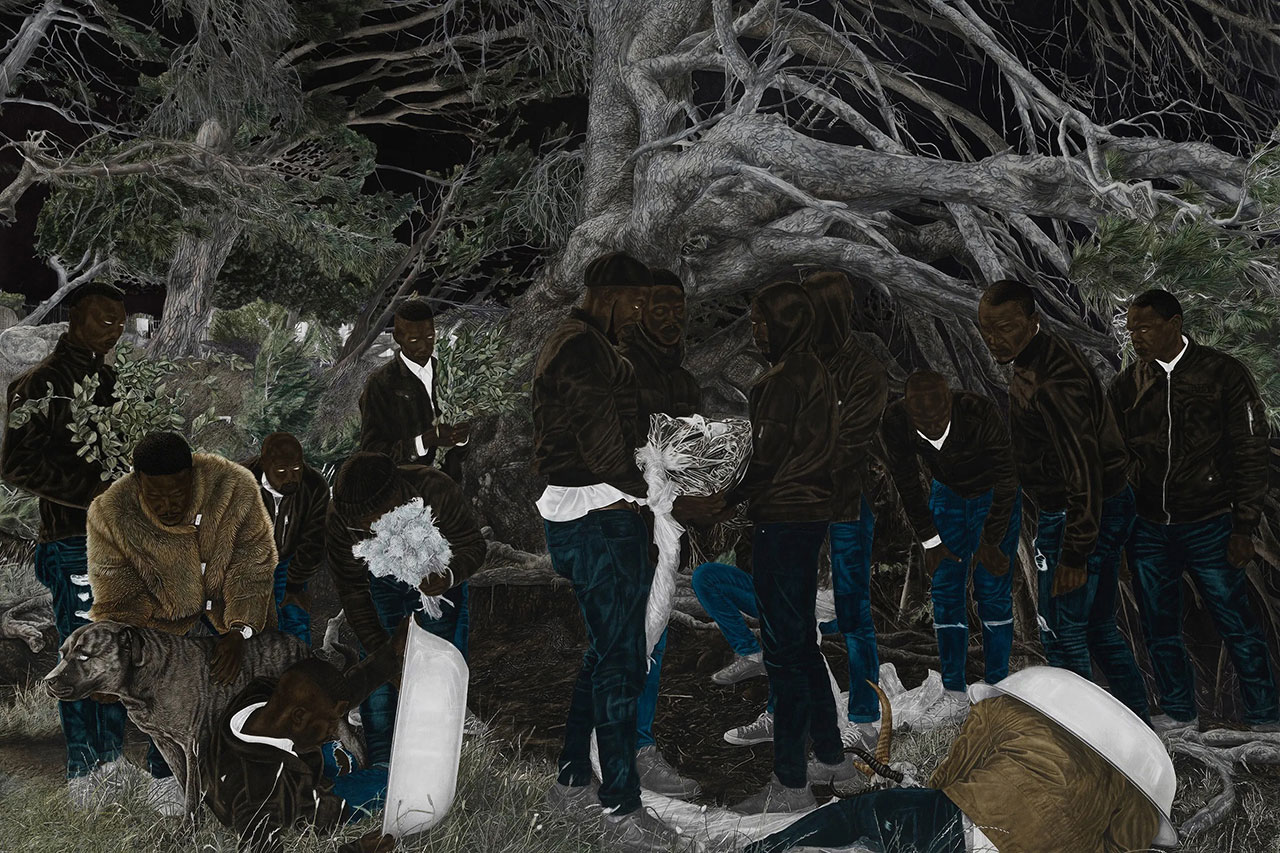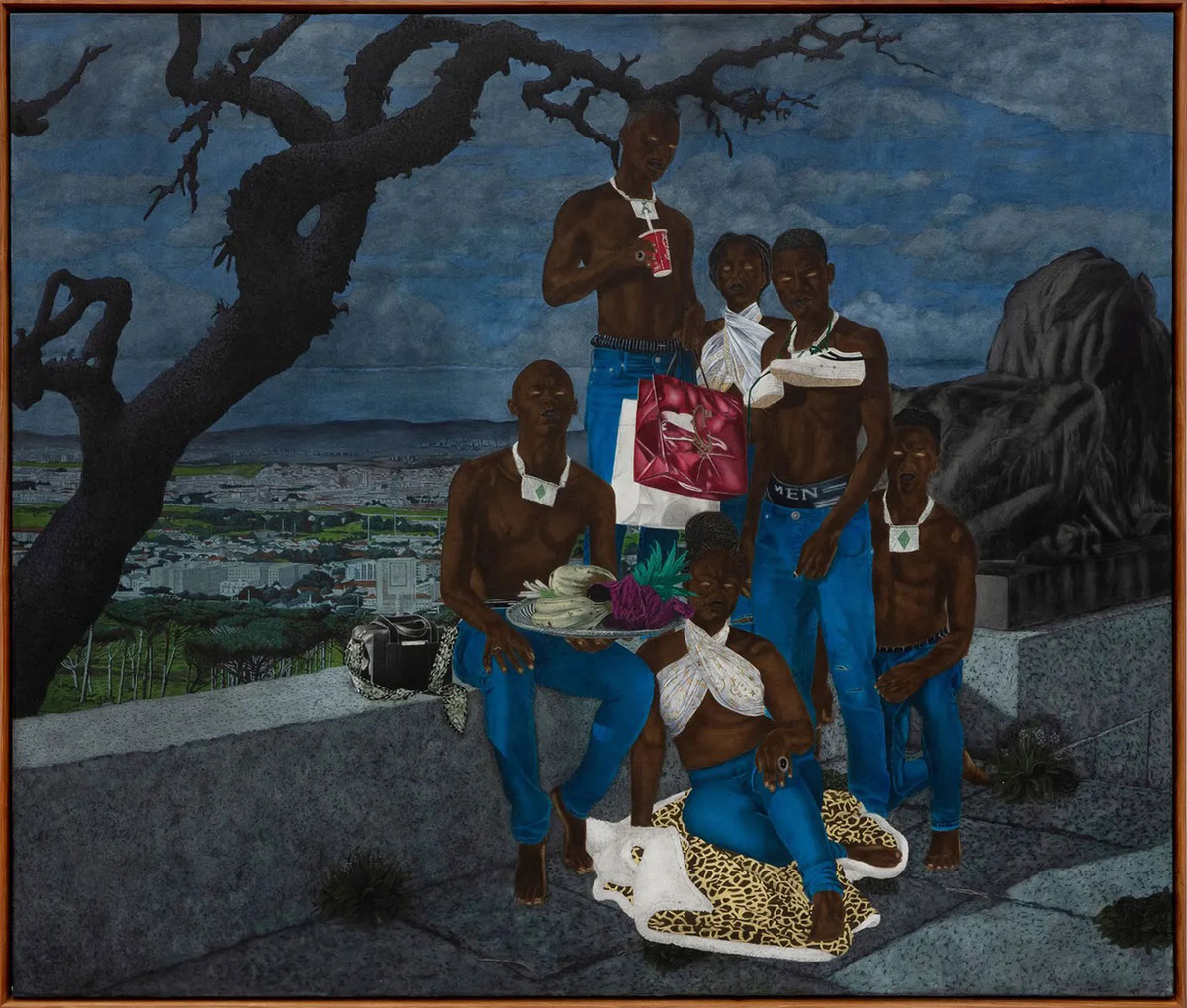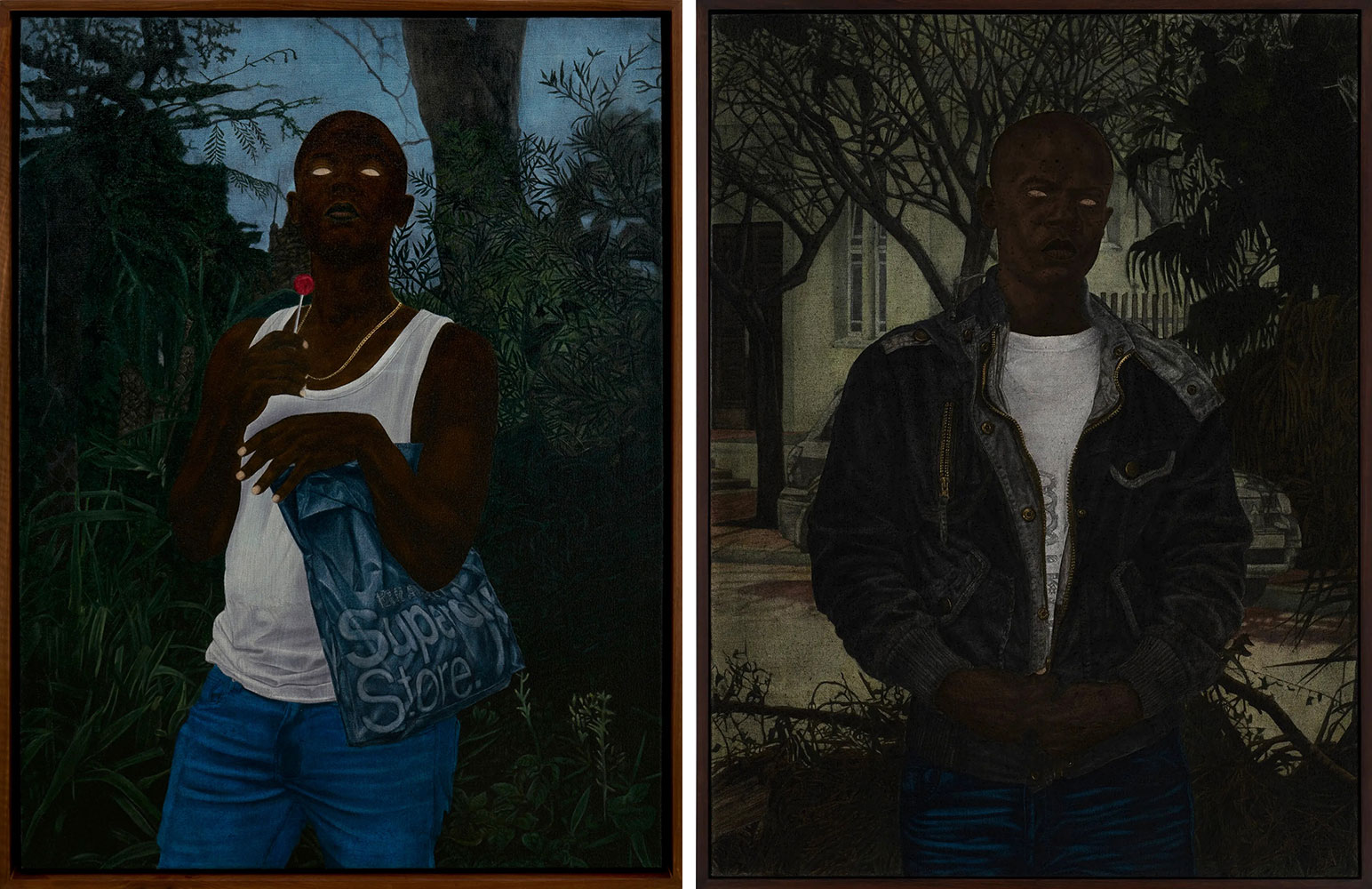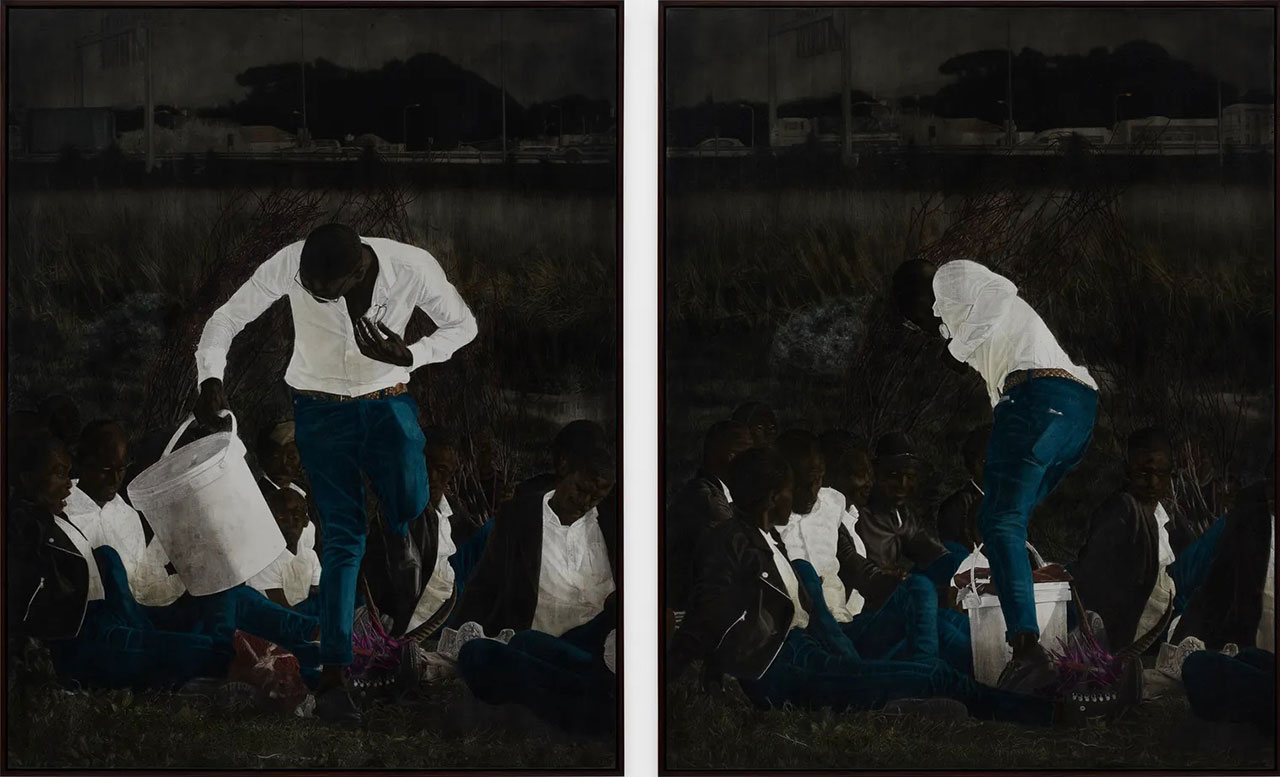ART CITIES: London-Cinga Samson
 Cinga Samson’s works inhabit and extend a painterly tradition, asserting their place within the long trajectory of figuration in art. This commitment to his métier facilitates an exploration of ideas around desire, power, mortality and transience. Weaving together the classical and the contemporary, Samson creates images with symbolic, spiritual and social inferences, drawn together by subjective narrative.
Cinga Samson’s works inhabit and extend a painterly tradition, asserting their place within the long trajectory of figuration in art. This commitment to his métier facilitates an exploration of ideas around desire, power, mortality and transience. Weaving together the classical and the contemporary, Samson creates images with symbolic, spiritual and social inferences, drawn together by subjective narrative.
By Efi Michalarou
Photo: White Cube Archive
“Nzulu yemfihlakalo”, the title for Cinga Samson’s solo exhibition, is borrowed from an isiXhosa* phrase which loosely translates to “the depth of mystery”, and is used to express devotion while also serving as a description of God. Hyperreal, and possessing a hallucinatory quality, Samson’s work speaks to the fusion of material and metaphysical realms. Through his paintings, the artist gives form to the intangible and provokes an encounter with the vast unknown. Situated against the backdrop of Cape Town’s urban environs and the surrounding natural landscape, the paintings register as familiar, though several anomalies set Samson’s world apart from the quotidian. Shrouded in a Cimmerian darkness, the figures frequently appear with objects or memento mori, such as white lace, animal innards, skulls and lifeless human forms wrapped in translucent sheets. Adopting graceful, funereal movements – as though engaged in ritual procession – their glowing eyes serve as both entry into the abyss while also resisting the viewer’s gaze, cautioning the onlooker against their own presence. Samson’s paintings offer a complex and nuanced picture of contemporary life. He relies on his facility as a painter to render the texture and richness of his experiences, and for that representation to carry a distinct atmosphere and feeling. Using a somber palette of muted tones, Samson’s paintings portray subjects that command an unusual autonomy and authority. As he described it, these figures inhabit a world that ‘feels secret, almost holy and distant’, coming from ‘somewhere no one goes’. There are certain markers, present throughout Samson’s oeuvre, which define the character of this inflected universe: protagonists with pupil-less eyes, sometimes shaven headed wearing denim jeans, are presented in formal, ceremonious poses. The symbols that the artist incorporates into the compositions are arrived at instinctively, often obliquely reflecting particular concerns at that time. In his singular portraits, for example, Samson includes native flora such as canna lilies or the ‘bird of paradise’ flower. These specific flowers not only serve as memento mori, but are also taken from the artist’s childhood memories, as well as having significance among some of the amaXhosa, where picked flowers were typically used only at grave sites. Central to Samson’s work is a concern with beauty. Typically set at a shadowless, crepuscular time of day, invoking pre-dawn or dusk, the paintings bring together realistic subjects and objects within settings which appear softened and more elusive. His images however, are constructed not only to entice, but also to caution the viewer against its own presence. Samson describes this as being that ‘feeling when you are curious, but you are also respectful at the same time.’ The eerie landscapes, often realized in gentle silhouettes, make pronounced the more acutely rendered elements – contrasts which might suggest the tradition of the vanitas. The protagonists themselves seem to be at ease with the funereal opulence granted to this setting, conveying a quiet sense of intelligence and control over their environment. Sampling different painterly techniques and treatments within a single painting, Samson’s works are composites of what he describes as ‘revelling in the material quality of oil painting’. In some parts, thin layers of glaze are applied and then wiped back to allow the white of the primed canvas to effect surface color. In other parts, the canvas itself and the under-drawing or painting is left exposed, resulting in a more textured, immediacy to the work, qualities in sympathy with the subject depicted. By incorporating elements of everyday life, Samson’s paintings build a visual language that reflects the complexity of South African society as well as the artist’s own identity.
* isiXhosa, is a Nguni language and one of the official languages of South Africa and Zimbabwe. Xhosa is spoken as a first language by approximately 10 million people and as a second language by another 11 million, mostly in South Africa and also in parts of Zimbabwe and Lesotho.
Photo: Cinga Samson, Umkhusana, 2021, Oil on canvas, 220 x 260 x 7.5 cm | 86 5/8 x 102 3/8 x 2 15/16 in., © Cinga Samson, Courtesy the artist and White Cube
Info: White Cube, 25 – 26 Mason’s Yard, London, United Kingdom, Duration: 7/7-26/8/2023, Days & Hours: Tue-Sat 10:00-18:00, www.whitecube.com/


Right: Cinga Samson, Ibhungane 15, 2020, Oil on canvas, 32 7/8 x 25 3/16 in. (framed), © Cinga Samson, Courtesy the artist and White Cube


